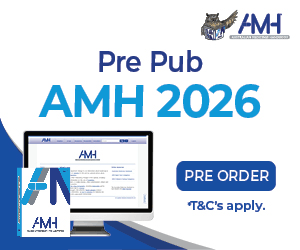SARS-CoV-2 (COVID-19) Omicron subvariant XBB.1.16 (‘Arcturus’) was first reported to the World Health Organization (WHO) on 9 January 2023. It was designated as a ‘variant under monitoring’ on 2 March 2023.1
Following sustained increases in reported cases, on 17 April 2023, the WHO designated Arcturus as a ‘variant of interest’ (VOI). The variant has been identified in 33 countries with a majority of cases present in parts of India.1
Compared to the previous XBB.1.5 variant (‘Kraken’), Arcturus has two combination mutations to the spike protein, in the N-terminal domain and the receptor-binding domain.2,3 The implication of these mutations relates to increased infectiousness and antiviral immunity evasion.1,2,4 The WHO has designated the subvariant as a low global risk compared to XBB.1.5 due to the lack of evidence to suggest an increase in severity, and its low hospitalisation impact compared to previous variant waves.1
Key Points
- The Omicron subvariant XBB.1.16 ‘Arcturus’ appears to be more transmissible than earlier variants and subvariants, which is likely to drive case numbers up.
- Illness associated with the Arcturus subvariant appears to be no more severe than currently circulating variants.
- Preliminary studies suggest that younger infants could be more susceptible to infection, with an increase in minor respiratory and conjunctival related symptomology.
- The World Health Organization has designated the sub-variant as a ‘variant of interest’ and has assessed it as a low global risk.
- Early evidence suggests that the Arcturus subvariant might be most vulnerable to the monoclonal antibody Sotrovimab, while evasive to six other laboratory tested monoclonal antibodies.
- At this stage, while specific evidence regarding the effectiveness of currently available vaccines on the Arcturus variant is absent, based on studies of prior Omicron variants, it is likely that effectiveness is similar and that vaccination especially for eligible people at higher risk of severe illness should be recommended.
Infectiousness
A study from India has found that Arcturus had an effective reproductive number that was 1.27 and 1.17-fold higher than the XBB.1 and XBB.1.5 sub-variants respectively.2 The WHO report an increase of proportional Arcturus cases in India between February 2023 to March 2023 of 15.3 to 58.6% and a 0.07 to 3.7% increase in Australia.1 Due to Arcturus’ increased infectiousness compared to previous variations, a global spread and an increase in overall proportion of cases is possible, however, it currently appears to represent no additional public health risk compared to other present variants.1
Severity
Arcturus has so far displayed no difference in severity compared to other Omicron variants.5,6 Common clinical features include fever, cough, rhinorrhoea, body aches, and fatigue.6 Among a study of 276 cases in India, around 25.7% required hospitalisation/institutional quarantine, and 33.8% of these needed oxygen therapy. 2.5% of cases succumbed to the infection, however, the majority of these were elderly, had underlying comorbid conditions, and required oxygen therapy.6
A preliminary study of paediatric cases from India indicates that younger infants could be more susceptible to infection compared to older children.7 The study has found that among common symptomology, mild respiratory illness shows predominance over other symptoms in young infants, with a high proportion (42.6%) displaying non-purulent conjunctivitis.7 Conjunctivitis is a known symptom of COVID-19, with ocular manifestations consistent with conjunctivitis present between 0.8- 11.6% of reported COVID-19 cases.8,9 Ocular symptoms such as this highlight how the COVID-19 virus can be transmitted when viral particles come in contact with the eyes,8,10,11 with traces of the SARS-CoV-2 having been found in tear fluid.12,13
Immunity evasion, monoclonal antibodies, and vaccination/boosters
Preliminary findings suggest that Arcturus follows the evolutionary patterns displayed by other Omicron variants, with the ability of Arcturus to elicit an immune response being relatively similar to that of Omicron.2,14 The binding affinity of Arcturus to the ACE2 receptor is higher than of Omicron.2 Binding affinity relates to the ability of the invasive virus to ‘bind’ within a human cell and cause infection.15 These findings suggest that Arcturus’ growth advantage is due to its higher immune evasion.7
Monoclonal antibodies targeting the SARS-CoV-2 spike protein have previously demonstrated clinical benefits in treating COVID-19 infections,16 however, emerging evidence suggests that they may not be as effective against the Arcturus subvariant. A study has reported that out of six clinically available monoclonal antibodies (Bebtelovimab, Casirivimab, Cilgavimab, Imdevimab, Sotrovimab and Tixagevimab), only sotrovimab displayed antiviral activity against the Arcturus subvariant.6,14 This is consistent with findings of reduced monoclonal activity against the Omicron variants, with some studies suggesting that Sotrovimab may remain a viable treatment method.17-20 Further study is required to determine the effectiveness of Sotrovimab against Omicron and subvariants in a clinical setting.
As yet, no studies have investigated the effectiveness of commonly used mRNA vaccines (eg. Pfizer and Moderna) against the Arcturus variant, however Omicron variants have historically displayed a high immunity evasion due to the persistent mutations to the spike protein.4,21 This suggests that people who are eligible to receive COVID-19 vaccinations should consider ensuring that their doses are up to date with current health advice. A study from Singapore indicates that the risk of infection, regardless of the omicron subvariant, is 1.5 time higher for those with one primary vaccination dose or less, compared to those who have also received a booster shot.5
Conclusion
Preliminary findings suggest that while Arcturus may not represent a significant additional public health risk, due its growth advantage it may overtake present strains and lead to an increase in the number of COVID-19 cases circulating in the community. It is also important to note that the Arcturus subvariant might be related to increased infection rates among younger infants and be associated with respiratory and ocular symptoms. At this early stage, while it appears unlikely that the Arcturus subvariant will significantly increase the number of severe COVID-19 cases and hospitalisations, careful monitoring must occur particularly as we enter the colder months and influenza season.
Despite the Arcturus subvariant appearing to be associated with milder illness, people who are more vulnerable to infection due to age, underlying conditions, disability, or other factors should be mindful of potentially larger numbers of people in the community with possible COVID-19 infection and should follow up to date advice on infection prevention and control and vaccination guidance.
*ALERT* Evidence regarding COVID-19 is continually evolving. This resource will be updated regularly to reflect new emerging evidence but may not always include the very latest evidence in real-time.
To read or download a .PDF of the information contained in this article, please follow this link: ANMF COVID-19 Resources
References
-
World Health Organization. XBB.1.16 Initial Risk Assessment, 17 April 2023. 2023. https://www.who.int/docs/default-source/coronaviruse/21042023xbb.1.16ra-v2.pdf?sfvrsn=84577350_1.
-
Yamasoba D, Uriu K, Plianchaisuk A, et al. Virological characteristics of the SARS-CoV-2 Omicron XBB.1.16 variant. bioRxiv 2023: 2023.04.06.535883.
-
Zappa M, Verdecchia P, Angeli F. Is the competition between variants the end of severe acute respiratory syndrome coronavirus 2 pandemic? A journey from Wuhan to XBB.1.16. Eur J Intern Med 2023.
-
Vitiello A, Ferrara F, Auti AM, Di Domenico M, Boccellino M. Advances in the Omicron variant development. Journal of Internal Medicine 2022; 292(1): 81-90.
-
Pung R, Kong XP, Cui L, et al. Severity of SARS-CoV-2 Omicron XBB subvariants in Singapore. medRxiv 2023: 2023.05.04.23289510.
-
Karyakarte RP, Das R, Rajmane MV, et al. Chasing SARS-CoV-2 XBB.1.16 Recombinant Lineage in India and the Clinical Profile of XBB.1.16 cases in Maharashtra, India. medRxiv 2023: 2023.04.22.23288965.
-
Vashishtha VM, Kumar P. Preliminary clinical characteristics of Pediatric Covid-19 cases during the ongoing Omicron XBB.1.16 driven surge in a north Indian city. medRxiv 2023: 2023.04.18.23288715.
-
Güemes-Villahoz N, Burgos-Blasco B, García-Feijoó J, et al. Conjunctivitis in COVID-19 patients: frequency and clinical presentation. Graefes Archr Clin Exp Ophthalmol 2020; 258(11): 2501-7.
-
Guan W-j, Ni Z-y, Hu Y, et al. Clinical Characteristics of Coronavirus Disease 2019 in China. N Engl J Med 2020; 382(18): 1708-20.
-
Loffredo L, Pacella F, Pacella E, Tiscione G, Oliva A, Violi F. Conjunctivitis and COVID-19: A meta-analysis. J Med Virol 2020; 92(9): 1413-4.
-
Scalinci SZ, Trovato Battagliola E. Conjunctivitis can be the only presenting sign and symptom of COVID-19. IDCases 2020; 20: e00774.
-
Bonn D. SARS virus in tears? Lancet Infect Dis 2004; 4(8): 480.
-
Muyldermans A, Bjerke M, Demuyser T, et al. SARS-CoV-2 RNA and antibodies in tear fluid. BMJ Open Ophthalmol2021; 6(1): e000733.
-
Nehlmeier I, Kempf A, Arora P, et al. Host cell entry and neutralisation sensitivity of the SARS-CoV-2 XBB.1.16 lineage. Cell Molr Immunol 2023.
-
Kumar D, Kumari K, Jayaraj A, et al. Understanding the binding affinity of noscapines with protease of SARS-CoV-2 for COVID-19 using MD simulations at different temperatures. J Biomol Struct Dyn 2021; 39(7): 2659-72.
-
Chavda VP, Prajapati R, Lathigara D, et al. Therapeutic monoclonal antibodies for COVID-19 management: an update. Expert Opin on Biol Ther 2022; 22(6): 763-80.
-
Arora P, Kempf A, Nehlmeier I, et al. Omicron sublineage BQ.1.1 resistance to monoclonal antibodies. Lancet Infecti Dis 2023; 23(1): 22-3.
-
Ikemura N, Hoshino A, Higuchi Y, Taminishi S, Inaba T, Matoba S. SARS-CoV-2 Omicron variant escapes neutralization by vaccinated and convalescent sera and therapeutic monoclonal antibodies. medRxiv 2021: 2021.12.13.21267761.
-
Tao K, Tzou PL, Pond SLK, Ioannidis JPA, Shafer RW. Susceptibility of SARS-CoV-2 Omicron Variants to Therapeutic Monoclonal Antibodies: Systematic Review and Meta-analysis. Microbiol Spect 2022; 10(4): e00926-22.
-
Wilhelm A, Widera M, Grikscheit K, et al. Reduced Neutralization of SARS-CoV-2 Omicron Variant by Vaccine Sera and Monoclonal Antibodies. medRxiv 2021: 2021.12.07.21267432.
-
Vzorov AN, Samokhvalov EI, Chebanenko VV, Scheblyakov DV, Gintsburg AL. Modification of the Spike Protein for Vaccines against Enveloped RNA Viruses. Mol Biol 2021; 55(4): 538-47.
Authors:
Jarrod Clarke and Micah DJ Peters PhD are at the National Policy Research Unit (Federal Office), Australian Nursing and Midwifery Federation (ANMF) and University of South Australia, Clinical and Health Sciences, Rosemary Bryant AO Research Centre








